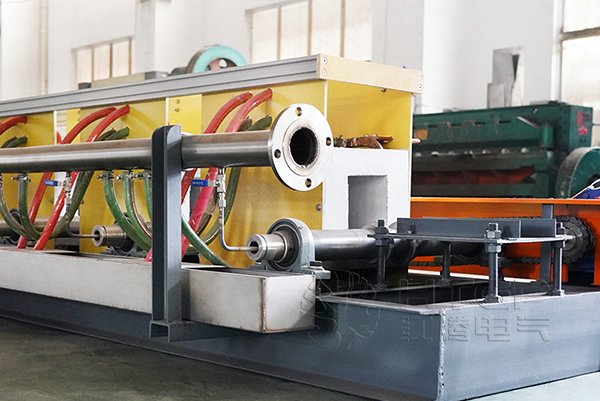Forging is the processing of partial or total plastic deformation of the billet or ingot under the action of pressure equipment and tools (molds) to obtain parts (or blanks) of a certain geometric size and shape and improve their structure and performance.
Metal materials need to be heated before being forged. At present, the commonly used heating equipment on the market is an induction heating furnace. An induction heating furnace has the advantages of fast heating speed, precise control of heating parts, low energy consumption, and a small footprint.

After forging, the metal material has good shape and dimensional stability, uniform structure, reasonable fiber structure, and the best comprehensive mechanical properties. The main load-bearing structure or secondary load-bearing structure in mechanical equipment is generally made of forgings, which are widely used in various fields of the national economy and national defense industry. The main raw materials for forging are metal bars, ingots, etc. During the smelting, pouring, and crystallization process of these raw materials, defects such as pores, shrinkage cavities, and dendrites will inevitably occur. Therefore, Therefore, it is difficult for the casting process to produce parts that are suitable for working environments that need to withstand shocks or alternating stress (such as drive shafts, ring gears, connecting rods, track wheels, etc.). However, after the metal bar or ingot is forged, its structure and performance can be effectively improved and enhanced. At the same time, due to the plastic deformation and recrystallization of the metal, the coarse grains can be refined to obtain a dense metal structure, thereby improving the mechanical properties of the forging.
In addition, in the design of parts, if the directions of force and fiber structure of parts are correctly selected, the impact resistance of forgings can also be improved. Therefore, the essence of forging is to use the plastic deformation of the metal to change the shape and performance of the metal blank to become a qualified forger. , so as to obtain forgings of the required shape and size, and at the same time make the mechanical properties and internal organization of forgings meet certain technical requirements.
The upstream of the forging industry is mainly smelting enterprises of various metal materials, such as carbon steel, stainless steel, alloy steel, superalloy, titanium alloy, aluminum alloy, etc. The supply capacity and technical level of upstream raw materials directly affect the development level of the forging industry.
As a key basic component necessary for the equipment manufacturing industry, forging products are mainly downstream of complete equipment manufacturers in the aviation, aerospace, shipbuilding, electric power, petrochemical, and other machinery industries, and are ultimately used in various related industries in the national economy and defense industry. The downstream industry's requirements for forging product precision, performance, service life, reliability, and other technical indicators dominate the technological trend of the forging industry, and the prosperity of the downstream industry also directly determines the demand and market capacity of the forging industry.